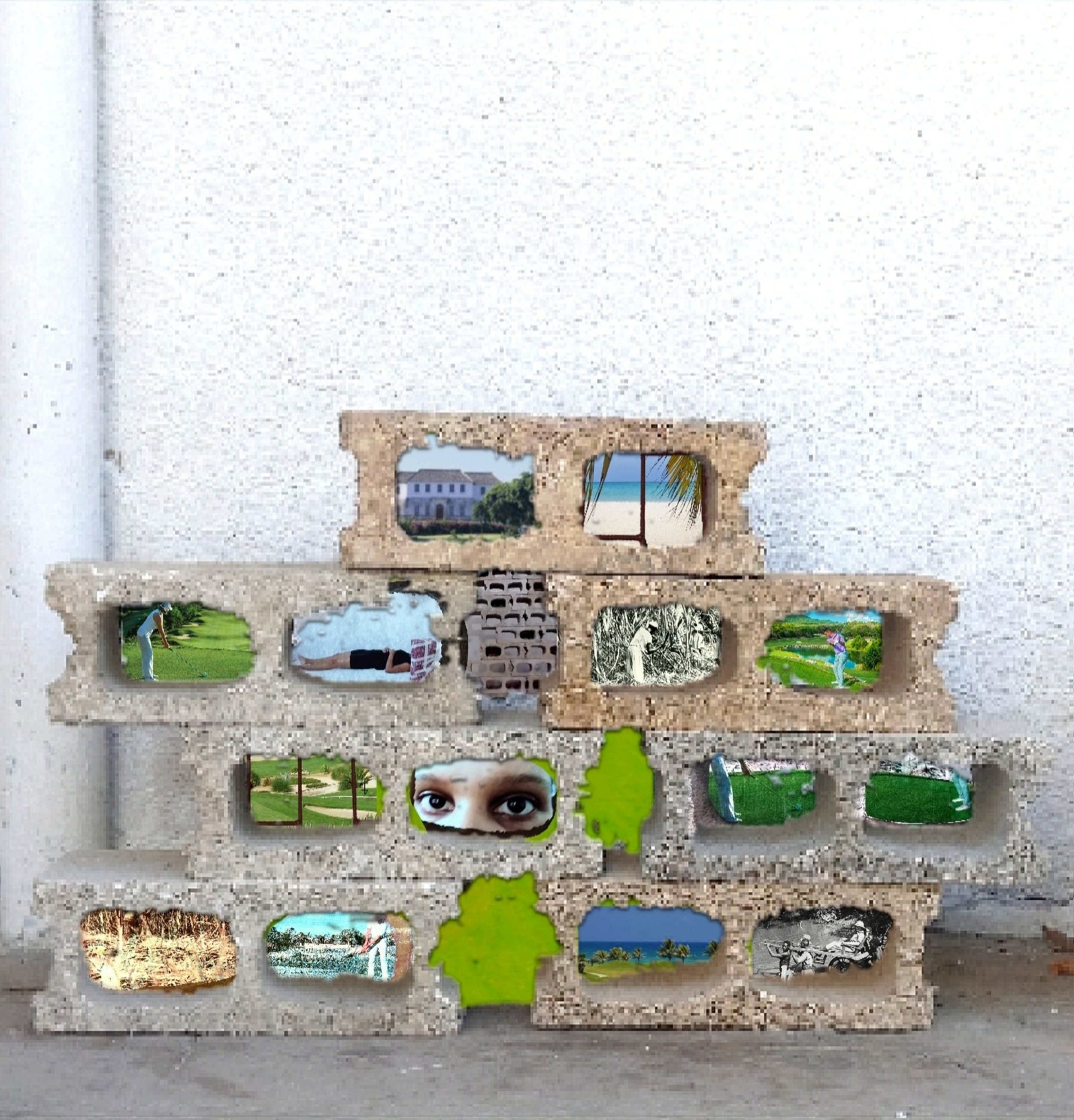
Scaffolding Time
Curated by Jheanelle Brown
Presented in Collaboration
With Jamaica Art Society
Artists: Simon Benjamin, Camille Chedda, Leasho Johnson, and Jasmine Thomas-Girvan
Curator: Jheanelle Brown
How does one build and rebuild structures of knowledge, love, and memory in the wake of generations of rupture? The artists in the exhibition produce work across various mediums - painting, sculpture, film - that give aesthetic shape to memory localized in Jamaica (and the larger Caribbean) and its portals across the globe. The work in this exhibition buttresses time’s oppressive hold on our relationship to the natural world and considers how built environments retain or discard meaning. Scaffolding Time invites viewers to think through, above, around, and beyond terrestrial time in the hopes of charting a pathway with liberation at the center.
Camille Chedda imbues deep consideration into a historical deconstructionist set of works that takes up the continued meaning of former plantation estates as present sites of leisure for tourists and the white elite. Scaffolding time, the words themselves, find meaning in Chedda’s work. Scaffolding and construction can be thought of literally. Concrete blocks and sandbags act as the actual material that carry the weight of Jamaica's colonial history, specifically with regards to plantations. The golf courses represented in Chedda’s Constructions series are present-day manifestations of the ways in which Britain extracted value from Jamaica. In this way, the nourishment and earthly guidance that a land’s people could derive from the land itself was and continues to be interrupted by a colonial force. Time.
Simon Benjamin’s sculptures, installations, photographs, and films work to elevate what he terms the “anti-tropical,” or an undoing of the myth of the Caribbean as only paradise. According to Benjamin, this work can be situated as oppositional to the images propagated by tourism promotion that follows in the legacy of the plantation economy and a broader colonial paradigm, aestheticizing Jamaica as solely a picturesque tropical paradise, positioning it ahistorically and apolitically. To counter this, Benjamin offers works based on relationality and economies of movement that construct Jamaica and the wider Caribbean as a space of labor that should be more rigorously understood. In this space of the anti-tropical, the sea’s presence echoes throughout Benjamin’s work, as ontological maker and undoer; as mover of beings; as source of nourishment and capital. The work presented in Scaffolding Time uses elements of the natural world not only as material, but as a setting in which to examine how historical and present conditions shape, for instance, a Treasure Beach fisherman’s relationship to the environment around him. Tommy Wong, a fisherman, painter, and the central figure in Benjamin’s work Erranty, is representative of a sobering wisdom about humanity’s complex relationship to sky, land, and sea. As much as we should give to and nourish the natural world, our society is built on extraction from it. Inevitably, this extraction disproportionately affects regions such as the Caribbean.
Leasho Johnson’s recent work treads the site of his memory as a foundation for exploring the tension between visibility and invisibility. The work presented in this exhibition, from his Anansi series, is set in the natural world, the outdoors, but elevates the erotic and the private. In this, Johnson is collapsing the boundaries between the exterior and the interior which is deeply important work when one considers access to safety and security of Black queer bodies. Johnson’s work inhabits space alongside fahima ife’s Maroon Choreography, particularly, this excerpt:
Somewhere succulent and hush - { beside } - some bodies stole and spread out leveled into - If you are looking for a way into somewhere else then move horizontally - Sprawl out anagrammatic of the underneath - A black field a horizon - An experiment in taking leave leave taking stealing - Away is a process of coming upside - art i have no idea - If a group of people fade out in the black morning what becomes of all that mourning
{ black study, paraontology }
The deep void of literal Blackness, actualized with charcoal in the work in this exhibition offers so much for Black bodies seeking peace. Amongst the bush, a domestic space is created. Eroticism is transported to the exterior, and therein Johnson’s queer bodies find refuge and create a site of expansive possibility. In abstraction, Johnson is participating in a refusal to construct Blackness along the prescribed codes of figuration.
Jasmine Thomas-Girvan’s practice reclaims and uplifts African and indigenous (specifically, Taino) spiritualities as a way to examine history. The work presented in Scaffolding Time features references to mythologies and histories across the Black diaspora. In Thomas-Girvan’s words, her work “suspends the earthly and mundane to imagine histories untold.” The figures in Thomas-Girvan’s works can be read as specters of ancestral knowledge ready to be fully excavated, but are nevertheless actively healing and tending to what is left in the wake of disconnected histories. In this way, she is liberating a Black diasporic history from retellings that do not serve us, creating a scaffolding for reparative storytelling.
The artists presented in Scaffolding Time consider the ways in ruptured histories and the contested present, specifically located in the history of Jamaica and the wider Caribbean, can shape a future in greater communion with the natural world. The fugitive truths that Simon Benjamin, Camille Chedda, Leasho Johnson, and Jasmine Thomas-Girvan unearth hint at a deeper consciousness, and thus, a way forward founded in self-determination.
1. ife, fahima. Maroon Choreography. Raleigh, Duke University Press, 2021.
Jheanelle Brown, May, 2022




